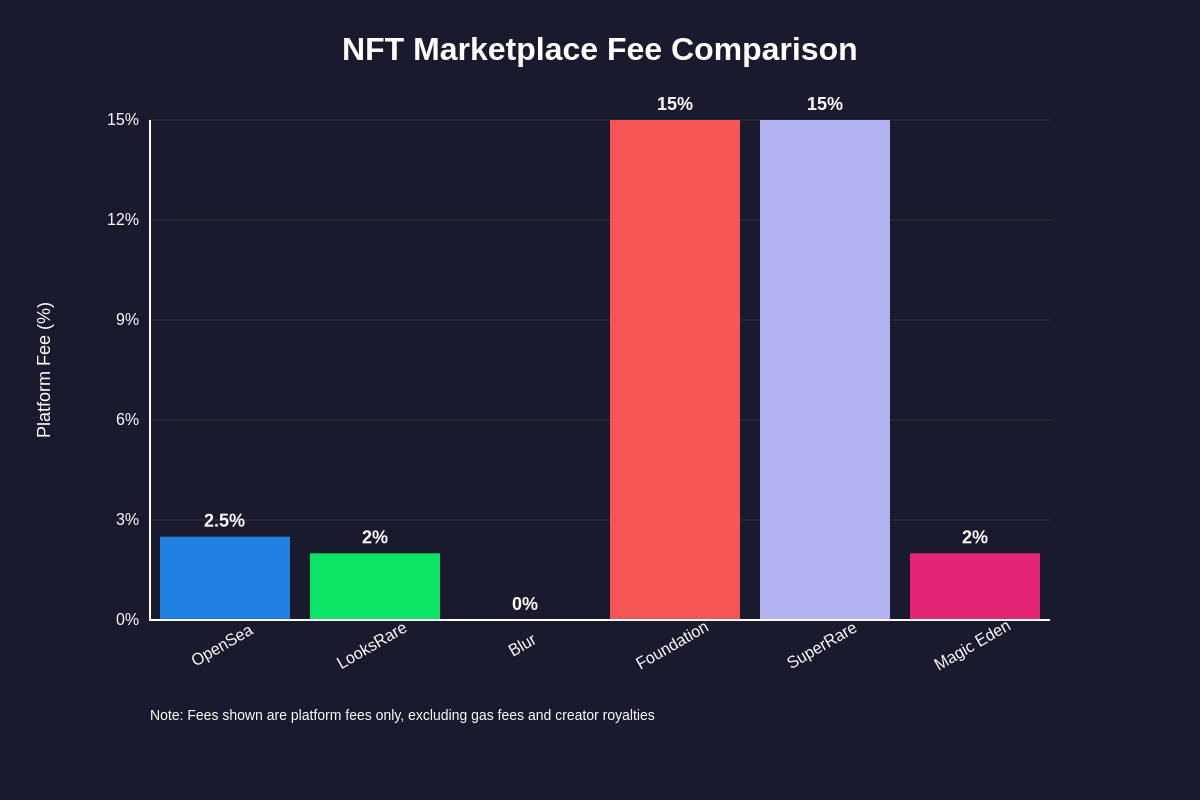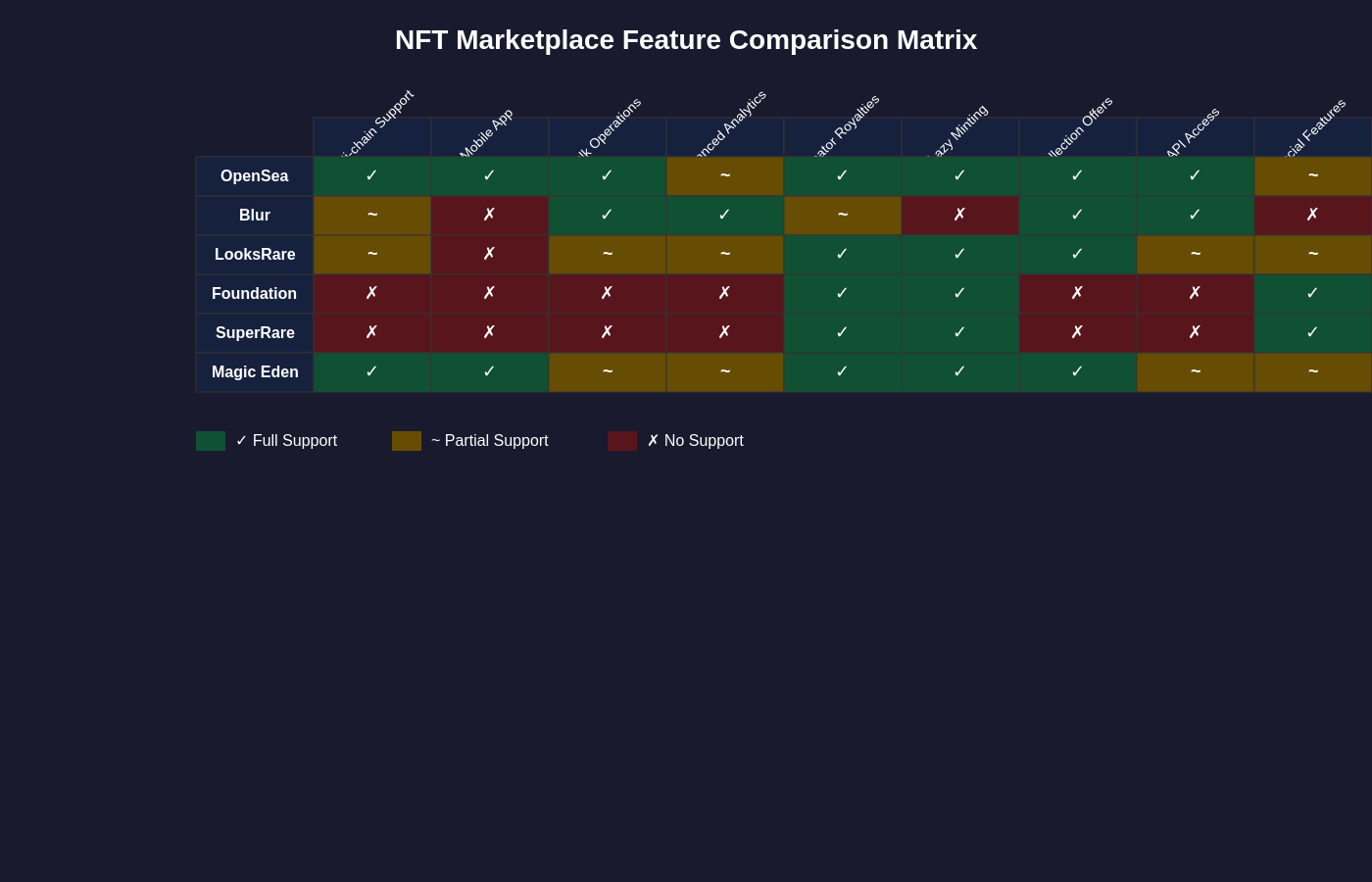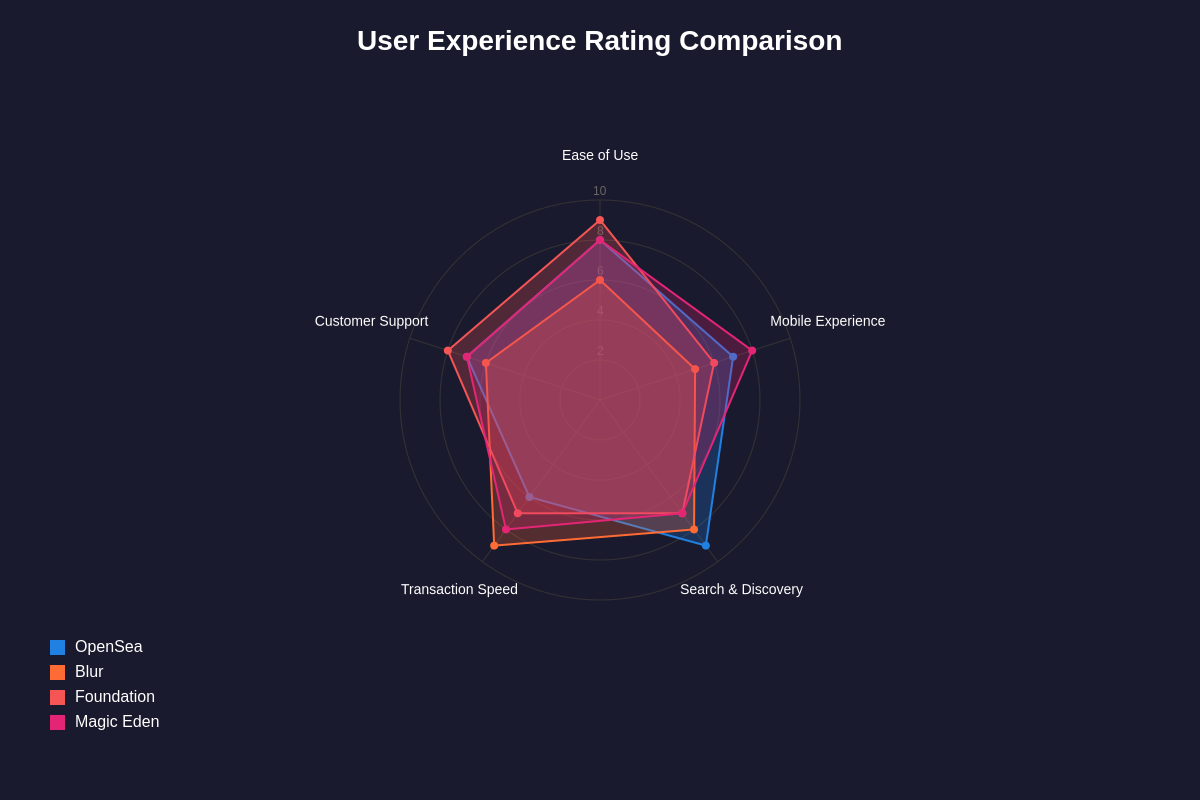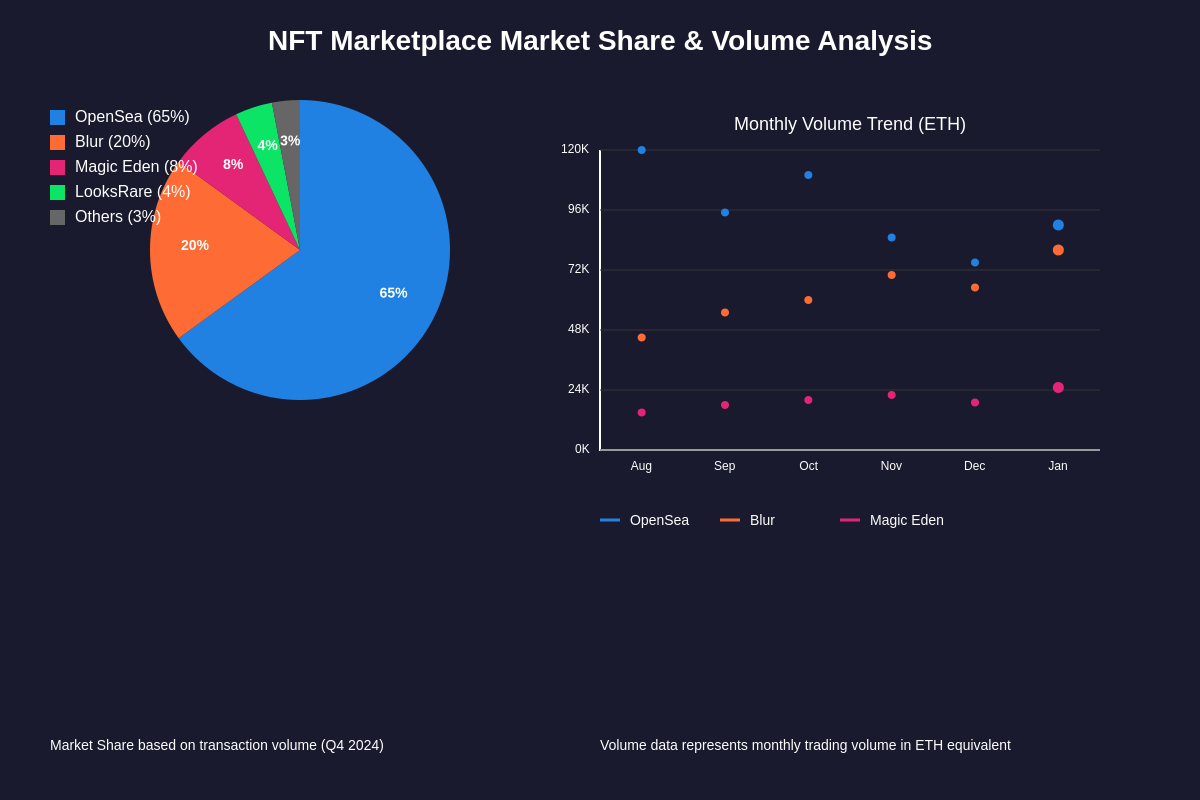Discover advanced NFT analytics on TradingView
The Digital Marketplace Revolution
The non-fungible token marketplace ecosystem has evolved into a sophisticated and highly competitive landscape where creators, collectors, and traders navigate an increasingly complex array of platforms, each offering distinct advantages and limitations in terms of fee structures, feature sets, and user experience. The choice of marketplace can significantly impact both the success of NFT creators and the satisfaction of collectors, making a comprehensive understanding of available options essential for anyone participating in the digital asset economy.
The emergence of NFT marketplaces represents a fundamental shift in how digital art, collectibles, and other unique digital assets are bought, sold, and traded, with platforms serving as intermediaries that facilitate transactions while providing essential services such as authentication, discovery, and community building. The success of these marketplaces depends on their ability to balance the needs of creators seeking maximum exposure and revenue with those of collectors looking for quality assets and seamless user experiences.
Fee Structure Analysis Across Major Platforms

OpenSea, as the largest and most established NFT marketplace, operates on a fee structure that charges 2.5% of the sale price as a platform fee, with additional creator royalties typically ranging from 0% to 10% depending on the collection and creator preferences. The platform’s fee model has remained relatively stable compared to newer competitors, though the platform has faced criticism for high gas fees associated with Ethereum transactions, particularly during periods of network congestion when transaction costs on the Ethereum network can reach prohibitive levels for smaller transactions.
LooksRare emerged as a direct competitor to OpenSea with a more aggressive fee structure, charging only 2% in platform fees while offering token rewards to users who trade on the platform. The platform’s reward mechanism, funded through the LOOKS token, has created significant trading volume, though critics argue that much of this volume consists of wash trading designed to earn token rewards rather than genuine market activity.
Blur has disrupted the marketplace landscape with its zero-fee trading model for most transactions, instead generating revenue through optional creator royalties and premium features. The platform’s focus on professional traders and aggregated liquidity has attracted significant volume from power users, though its interface and features may be less accessible to casual collectors and new users.
Foundation operates with a different model entirely, positioning itself as a curated platform for high-quality digital art with a 15% platform fee split between the platform (5%) and the Foundation community treasury (10%). While higher than other platforms, this fee structure supports Foundation’s curation model and community-driven approach to platform governance.
SuperRare maintains premium positioning with higher fees but focuses exclusively on single-edition digital artworks from verified artists, charging 15% on primary sales and 3% on secondary sales. The platform’s selective curation process and focus on established digital artists justify the higher fee structure for many participants.
Feature Comparison and Platform Capabilities

OpenSea offers the most comprehensive feature set among major NFT marketplaces, including support for multiple blockchain networks (Ethereum, Polygon, Klaytn, and others), extensive collection management tools, advanced search and filtering capabilities, and integrated analytics for tracking portfolio performance and market trends. The platform’s bulk operations and collection creation tools make it particularly attractive for creators launching large collections, while its mobile application provides full trading functionality for users who prefer mobile access.
The platform’s integration with major wallet providers and its API ecosystem have made it the de facto standard for many NFT-related applications and services, creating network effects that benefit both creators and collectors. OpenSea’s recent introduction of Seaport protocol has improved gas efficiency and enabled more complex transaction types, though the platform continues to face challenges related to user interface complexity and occasional technical issues during high-traffic periods.
Blur has focused heavily on advanced trading features that appeal to professional traders and collectors, including real-time price feeds, advanced portfolio analytics, and sophisticated filtering systems that enable users to identify trending collections and track market movements with precision similar to traditional financial markets. The platform’s portfolio tracking capabilities provide detailed performance metrics and profit/loss calculations that help serious collectors make informed trading decisions.
The platform’s unique bid-across-collection feature allows users to place bids on any item within a collection rather than specific individual NFTs, creating more liquid markets and enabling algorithmic trading strategies. Blur’s integration with popular portfolio tracking tools and its focus on data-driven decision making has attracted institutional collectors and professional traders who require sophisticated analytics and execution capabilities.
Magic Eden has established itself as the dominant marketplace on the Solana blockchain while expanding to support Ethereum and other networks, offering competitive fee structures and innovative features such as launchpad services for new collections and gamification elements that enhance user engagement. The platform’s focus on community building and creator support has created a loyal user base, particularly within the Solana ecosystem where transaction costs are significantly lower than Ethereum-based alternatives.
The platform’s innovative approach to collection launches, including fair launch mechanisms and anti-bot measures, has made it popular among creators seeking to build genuine communities around their collections rather than simply maximizing immediate sales revenue. Magic Eden’s integration with Solana’s ecosystem has enabled unique features such as compressed NFTs and programmable royalties that are not possible on other blockchain networks.
User Experience and Interface Design

The user experience across different NFT marketplaces varies dramatically based on target audience, technical complexity, and design philosophy, with each platform making different trade-offs between functionality and accessibility. OpenSea’s interface attempts to serve both novice and experienced users, resulting in a feature-rich but sometimes overwhelming experience that can be challenging for newcomers to navigate effectively.
The platform’s search and discovery mechanisms have improved significantly over time, with enhanced filtering options, trending sections, and personalized recommendations based on user activity and collection history. However, the sheer volume of NFTs available on OpenSea can make discovery challenging, and the platform’s broad focus means that high-quality collections can sometimes be lost among lower-quality or spam content.
Foundation prioritizes aesthetic presentation and artistic discovery, with a clean, gallery-like interface that emphasizes the visual quality of featured artworks and provides detailed artist profiles and collection narratives. The platform’s curation process ensures higher average quality but limits selection compared to open marketplaces, creating a more focused but potentially restrictive user experience.
The invitation-only model for artists creates exclusivity that can be appealing to collectors seeking unique or high-quality pieces, but it also creates barriers for emerging artists who may struggle to gain access to the platform. Foundation’s social features and community aspects enhance the user experience for those seeking to engage with artists and other collectors beyond simple transactional relationships.
Blur’s interface is designed specifically for power users and professional traders, with advanced charting tools, real-time market data, and sophisticated filtering systems that enable rapid decision-making and portfolio management. While this approach serves its target audience well, the platform can be intimidating for casual users who may find the abundance of data and options overwhelming.
The platform’s focus on speed and efficiency extends to its transaction processes, with streamlined buying and selling workflows that minimize the number of clicks and confirmations required to complete trades. This optimization is particularly valuable during periods of high market activity when prices can change rapidly and execution speed becomes critical for successful trading.
Mobile Experience and Cross-Platform Accessibility
Mobile accessibility has become increasingly important in the NFT marketplace landscape as users expect to be able to browse, buy, and sell NFTs from their smartphones and tablets with the same functionality available on desktop platforms. OpenSea’s mobile application provides comprehensive functionality including browsing, bidding, purchasing, and collection management, though the mobile interface can feel cramped when dealing with complex collection analytics or bulk operations.
The mobile experience varies significantly across platforms, with some prioritizing mobile-first design while others treat mobile as a secondary consideration. The complexity of NFT transactions, including wallet connections, gas fee estimation, and transaction confirmation, creates unique challenges for mobile interface design that many platforms are still working to address effectively.
Cross-platform synchronization and cloud-based portfolio tracking have become standard features, allowing users to seamlessly transition between devices while maintaining access to their collection data, watchlists, and transaction history. The integration with mobile wallet applications and the growing ecosystem of mobile-first crypto tools has improved the overall mobile experience for NFT trading.
Blockchain Integration and Multi-Chain Support
The evolution of NFT marketplaces has been closely tied to the expansion of blockchain ecosystems beyond Ethereum, with many platforms now supporting multiple networks to reduce transaction costs and improve user accessibility. OpenSea’s support for Polygon, Arbitrum, and other Layer 2 solutions has significantly reduced transaction costs for many users while maintaining compatibility with the broader Ethereum ecosystem.
Multi-chain support creates both opportunities and challenges for marketplaces, as they must maintain separate infrastructure for each supported blockchain while ensuring consistent user experiences across different networks. The variation in transaction costs, confirmation times, and technical capabilities across different blockchains means that marketplace features and limitations can vary significantly depending on which network users choose to use.
The emergence of cross-chain bridging solutions and multi-chain wallet applications has begun to blur the lines between different blockchain ecosystems, though most NFT collections remain tied to specific networks due to technical and community factors. Marketplaces that successfully navigate multi-chain complexity while maintaining user-friendly interfaces will likely gain competitive advantages as the ecosystem continues to evolve.
Creator Tools and Monetization Features
The tools and features available to NFT creators vary significantly across marketplaces, with some platforms focusing on simple minting and listing capabilities while others provide comprehensive creator studios with advanced customization options, analytics, and community building tools. OpenSea’s collection creation tools allow creators to establish custom storefronts, set royalty percentages, and access detailed analytics about their sales and collector base.
Advanced creator features such as programmable metadata, dynamic NFTs, and utility token integration are becoming increasingly important as creators seek to build more engaging and sustainable projects. Platforms that provide robust creator tools and educational resources tend to attract higher-quality projects and more engaged creator communities.
The monetization models available to creators extend beyond simple sales to include royalty structures, subscription models, and community membership tokens that provide ongoing revenue streams and deeper creator-collector relationships. Marketplaces that facilitate these advanced monetization strategies are likely to attract more serious creators and sustainable projects.
Security Measures and Trust Mechanisms
Security considerations for NFT marketplaces encompass both technical security measures and trust mechanisms designed to protect users from fraud, scams, and technical vulnerabilities. The decentralized nature of blockchain transactions means that most NFT purchases are irreversible, making security measures and user education critical for marketplace success and user safety.
Verification systems for creators and collections have become standard features, with platforms implementing various approaches to authenticating genuine creators and identifying potentially fraudulent or copied content. These systems range from simple social media verification to more sophisticated identity verification processes and community-based reporting mechanisms.
The integration with reputable wallet providers and the implementation of secure transaction protocols help protect users from technical vulnerabilities, though the complexity of blockchain interactions means that user education and clear interface design remain critical for preventing user errors that could result in lost funds or failed transactions.
Analytics and Market Intelligence Features
Advanced analytics capabilities have become a key differentiator among NFT marketplaces, with platforms providing increasingly sophisticated tools for tracking market trends, collection performance, and portfolio analytics. These features serve both individual collectors seeking to make informed purchasing decisions and creators looking to understand market dynamics and optimize their strategies.
Real-time market data, including floor prices, volume trends, and holder analytics, provides users with the information needed to navigate volatile NFT markets effectively. The integration with external analytics providers and the development of proprietary metrics and indices helps users understand broader market trends and identify emerging opportunities.
Portfolio tracking and performance analytics enable collectors to understand their investment returns and make data-driven decisions about buying, selling, and holding NFTs. These features have become particularly important as NFT collecting has evolved from hobby-driven activity to more serious investment and speculation.
Community Features and Social Integration
The social aspects of NFT marketplaces have become increasingly important as the space has matured, with platforms implementing various features designed to foster community engagement and facilitate interactions between creators, collectors, and other community members. These social features range from simple commenting and favoriting systems to more sophisticated community building tools and social discovery mechanisms.
Integration with social media platforms and the ability to showcase NFT collections across various digital channels has become a standard expectation, with many collectors using their NFT ownership as a form of digital identity and social signaling. Marketplaces that facilitate easy sharing and social integration tend to generate more organic growth and community engagement.
The emergence of community-driven curation and governance features allows users to participate in platform development and collection curation, creating more engaged user bases and potentially improving the overall quality of content and user experience. These features represent an evolution toward more decentralized and community-owned marketplace models.
Emerging Technologies and Future Developments
The NFT marketplace landscape continues to evolve rapidly with the integration of emerging technologies such as artificial intelligence, augmented reality, and advanced blockchain features that promise to enhance user experiences and create new possibilities for digital asset interaction. AI-powered recommendation systems and automated curation tools are beginning to help users discover relevant content more effectively in increasingly crowded marketplaces.
Augmented reality and virtual reality integration features are enabling new forms of NFT display and interaction, with some marketplaces beginning to support 3D and immersive content that can be experienced in virtual environments or overlaid on real-world settings through AR applications. These technologies represent potential future directions for NFT utility and user engagement.
Advanced smart contract features and programmable NFT capabilities are enabling more sophisticated use cases beyond simple collectibles, including utility tokens, membership passes, and interactive digital experiences that blur the lines between NFTs and other types of digital applications and services.
Regulatory Considerations and Compliance
The regulatory landscape for NFT marketplaces remains complex and evolving, with different jurisdictions taking varying approaches to the classification and regulation of NFTs and the platforms that facilitate their trading. Marketplaces must navigate questions about securities regulation, consumer protection, and tax reporting while maintaining user-friendly experiences and global accessibility.
Compliance requirements vary significantly across different regions and continue to evolve as regulators develop more specific guidance for NFT marketplaces and digital asset trading platforms. The need to implement age verification, geographic restrictions, and transaction reporting capabilities adds complexity to marketplace operations while potentially limiting user accessibility in some regions.
The development of industry standards and best practices for NFT marketplaces is ongoing, with various organizations and platforms working to establish common approaches to issues such as creator verification, intellectual property protection, and user safety measures that could improve the overall ecosystem while reducing regulatory uncertainty.
Economic Impact and Market Dynamics

The economic impact of NFT marketplaces extends beyond direct transaction fees to include effects on digital art markets, creator economies, and broader cryptocurrency adoption trends. The success or failure of major marketplaces can significantly influence overall NFT market sentiment and participation rates, creating feedback loops that affect the entire ecosystem.
Competition between marketplaces has generally benefited users through lower fees, improved features, and better user experiences, though the network effects and ecosystem integration advantages of established platforms create significant barriers to entry for new competitors. The evolution of marketplace business models continues as platforms experiment with different approaches to sustainable revenue generation.
The role of NFT marketplaces in price discovery and market making has become increasingly important as the space has matured, with marketplace features and policies directly influencing trading patterns, liquidity, and overall market efficiency. The integration with traditional financial markets and the potential for institutional participation continues to evolve as the regulatory landscape becomes clearer.
User Safety and Education Initiatives
Educational resources and user safety measures have become critical components of successful NFT marketplaces as the space has attracted increasing numbers of new users who may not be familiar with blockchain technology or the specific risks associated with NFT trading. Comprehensive educational content, safety warnings, and user guides help reduce the risk of user errors and improve overall user satisfaction.
Scam prevention and fraud detection systems are essential for maintaining user trust and platform credibility, with marketplaces implementing various approaches to identifying and preventing fraudulent listings, fake collections, and other malicious activities. The balance between automated detection systems and human moderation continues to evolve as platforms scale to handle increasing user bases and transaction volumes.
Community reporting mechanisms and user feedback systems enable collaborative approaches to maintaining platform quality and safety, with experienced users helping to identify problematic content and educate newer participants about best practices and common pitfalls in NFT trading and collecting.
Integration with DeFi and Broader Cryptocurrency Ecosystem
The integration of NFT marketplaces with decentralized finance protocols and other cryptocurrency services has created new possibilities for NFT utility and financial services, including NFT lending, fractional ownership, and yield generation through NFT staking and liquidity provision. These integrations represent the evolution of NFTs from simple collectibles to more sophisticated financial instruments.
Cross-platform integration and API availability enable third-party developers to build applications and services that extend marketplace functionality, creating ecosystem effects that benefit users through improved tools, analytics, and user experiences. The openness of different marketplaces to third-party integration varies significantly and can influence developer adoption and ecosystem growth.
The relationship between NFT marketplaces and traditional cryptocurrency exchanges continues to evolve, with some platforms beginning to offer integrated services that combine NFT trading with traditional cryptocurrency trading and DeFi services. This integration could potentially simplify user experiences while creating new revenue opportunities for platforms.
Performance Metrics and Success Indicators
The measurement of NFT marketplace success involves multiple metrics beyond simple transaction volume, including user retention rates, creator satisfaction, collection quality, and long-term community engagement. These metrics provide insights into platform sustainability and competitive positioning that pure volume figures may not capture effectively.
Technical performance metrics such as page load times, transaction success rates, and uptime statistics are crucial for user satisfaction and platform credibility, particularly during periods of high market activity when platform stability becomes critical for user success and satisfaction. The ability to handle traffic spikes and maintain consistent performance has become a key competitive factor.
User satisfaction metrics and community feedback provide important insights into platform strengths and weaknesses that may not be apparent from purely quantitative measures. The development of comprehensive measurement frameworks helps platforms identify areas for improvement and track the effectiveness of product development efforts.
Future Outlook and Market Evolution
The future development of NFT marketplaces will likely be influenced by broader trends in blockchain technology, regulatory developments, and user adoption patterns that extend beyond the current focus on digital art and collectibles. The expansion into utility tokens, membership systems, and integration with physical products represents potential growth areas for the marketplace ecosystem.
Technological improvements in blockchain scalability, user interface design, and cross-chain interoperability will likely address many current limitations while enabling new features and use cases that could significantly expand the addressable market for NFT marketplaces. The continued development of mobile-friendly solutions and mainstream user interfaces will be critical for broader adoption.
The competitive landscape will likely continue to evolve with new entrants focusing on specific niches or technological advantages, while established platforms work to maintain their network effects and ecosystem advantages. The eventual emergence of dominant platforms and market consolidation remains uncertain as the space continues to develop rapidly.
Track NFT market trends and analysis on TradingView
Disclaimer: This article is for informational purposes only and does not constitute financial advice. NFT investments carry significant risks including total loss of capital. Past performance does not guarantee future results. Always conduct thorough research and consider consulting with financial professionals before making investment decisions. The cryptocurrency and NFT markets are highly volatile and speculative.